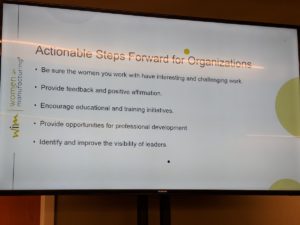 This week’s busy and informative Science in the Age of Experience event, held in Boston, highlighted the 3DEXPERIENCE of organizer Dassault Systèmes‘ partners and customers as 3D technologies make more integrated platform thinking possible. Starting off the event, co-located with the 3DEXPERIENCE Forum, was Monday’s Additive Manufacturing Symposium, which brought together experts across a variety of disciplines and focuses working with industrial 3D printing technologies.
This week’s busy and informative Science in the Age of Experience event, held in Boston, highlighted the 3DEXPERIENCE of organizer Dassault Systèmes‘ partners and customers as 3D technologies make more integrated platform thinking possible. Starting off the event, co-located with the 3DEXPERIENCE Forum, was Monday’s Additive Manufacturing Symposium, which brought together experts across a variety of disciplines and focuses working with industrial 3D printing technologies.
Subham Sett, Director, Additive Manufacturing & Materials, was one of the driving forces behind the Symposium experience as he was for last year’s, and it was a pleasure to speak with him again as we sat down to discuss the merits of such gatherings as well as the direction of the industry.
“When we started planning for the event, last year we looked at everything from conceiving the product to making it. We had a vision for material, design, manufacturing, and marketplace, but we weren’t in a place to say everything is out there to see, or it wasn’t widespread. A year later, we’re there,” he told me of the coming together of this resource and the progress made in just one year in the industry.
“We can see that in the tracks; there’s a growing ecosystem, and users, with thought leaders willing to come and speak of their own experiences. We heard from Airbus and the journey they started in this direction. A nice thing from the Airbus keynote was to see everything start with design on the project [Sjoerd Van der Veen] was talking about, which was under way I want to say two years ago. At our users’ conference in 2015, Airbus challenged us to see what Dassault can do end to end… It’s been great to see not onlyt that, but to hear from Boeing too. These challenges from the biggest names in aerospace, and how we talk about going from concept to production.”
Given the breadth of industries putting Dassault Systèmes’ portfolio of services to use, taking ideas through to production requires a strong look at design. By incorporating 3D printing more significantly into the workflow, design for additive manufacturing (DfAM) figures more strongly into consideration, particularly when looking toward the rising need for functional parts.
“Design is the first step, looking at lightweighting, at topology optimization. For the industry to grow and become mainstream, these parts have to be in production in the field. Our focus is printable,” Sett said.
“What’s really driving this shift toward performance in additive is material. Additive is science; we’re bringing in the physics to make it functional.”
The sessions, including the breakout tracks, were designed to bring a variety of perspectives to showcase the importance of these sciences in industrial 3D printing. Sett underscored that Dassault Systèmes is focusing on developing simulation from a material perspective and a process perspective, in a material- and process-agnostic way. It is, as he calls it, any material, any machine. This approach allows users to meet their needs without needing to turn to new software packages; “All of it can be done by a very simple customization process,” Sett noted.
By leveraging experience gained across platforms such as CATIA over the last two decades-plus, the Dassault Systèmes team has been developing their additive manufacturing applications by “using the same digital thread, parametric geometry,” and having been exposed to users’ applications ranging from functional design to shape compensation. Compensating for distortion ahead of a print job allows for the part to come out right the first time, thanks to simulation.
“We are at a point in additive manufactuing where it’s still not mainstream, and there’s a lot to figure out. Technologies are changing at such a rapid pace it almost feels like the latest and greatest for technology is in the additive space. There is not enough being done yet to address how the end user approaches it, though. I feel that’s a shared responsibility for the ecosystem, whether software like us or OEMs, to come together to design programs, whether graduate or undergraduate level programs, to train more,” Sett said, pointing to the critical consideration of workforce education and training.
“With Dassault Systèmes we’ve started the journey already; you can see that in the [co-located student] hackathon, they have access to our whole software suite, working in one environment through the cloud. They can be productive, they can communicate with the machine. This is a bridge between the digital world and the real world. More needs to be done at the curriculum level, and we’re talking with several universities to add to the curriculum. A lot more needs to be done.”
Keeping on this train of thought, we touched on the need for training and certification in the industry as well. The current workforce requires more training to be ready to bring these new technologies on-site — and they need the reassurance that it will be worth it. Certification of parts for end use is a major focus in particularly the highly-regulated aerospace and medical sectors, and will have a cumulative effect of highlighting the quality and consistency with which additive manufacturing can produce parts for industry.
“Where we are seeing a lot of interest for functional parts is in aerospace and defense, but also in life sciences. Not just for customized tools, either; this is an area users and cusotmers are encouraging us to push. Life sciences are seeing more focus in materials qualification and process certification. These industries are leading the charge for usable parts. Hopefully others will follow suit,” he said.
For additive manufacturing to truly become mainstream, Sett pointed out, functional parts need to come into existence.
“Part of that picture is getting the whole supply chain on a certification track. It’s a shared responsibility to move the industry along,” he said.
Part of that shared responsibility also means building up a better experience for users. One challenge many potential users are facing, and one directly impacting Dassault Systèmes, comes in the form of software. Some users have reported as many as 10 different software programs coming into play. “Engineers, designers, simulation analysts, and manufacturers are not just looking at software that looks integrated on the surface,” Sett pointed out, but require actual integration in real-world conditions.
“There’s are productivity loss issues that come with learning multiple software packages. Clearly there’s recognition of this in the additive manufacturing industry as it’s maturing. Being able to connect all this in a digital thread that takes it all the way through machines is necessary,” he said. “There’s a need for hardware and software guys to come together to complete the user experience — not just the user experience, but the whole journey… From the Dassault Systèmes side, we want to bridge that gap from concept to production so we can focus more on production.”
Ultimately, he told me, the message he’s looking to get out there is that, “We want to make additive real for the enterprise.”
An entire ecosystem is necessary for industrial 3D printing to truly take its place as part of the mainstream manufacturing industry, with all aspects connecting much more seamlessly than they are now.
Discuss Dassault Systèmes, industry challenges, and other 3D printing topics at 3DPrintBoard.com or share your thoughts in the Facebook comments below.
[All photos: Sarah Goehrke]











